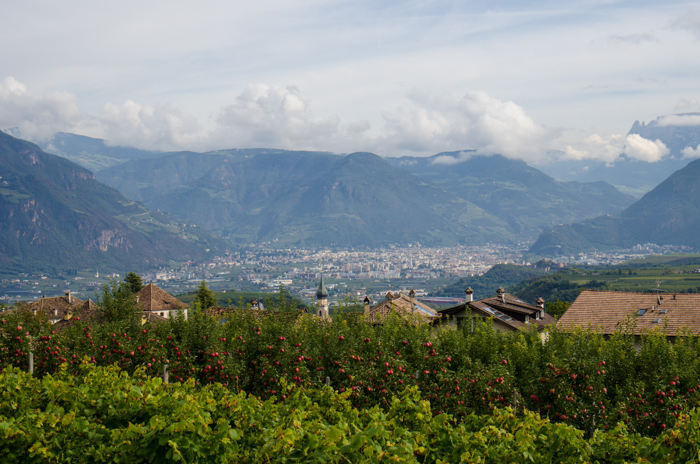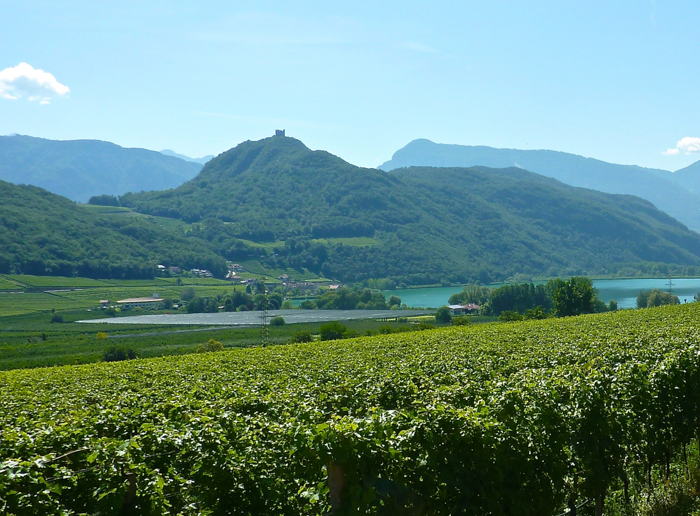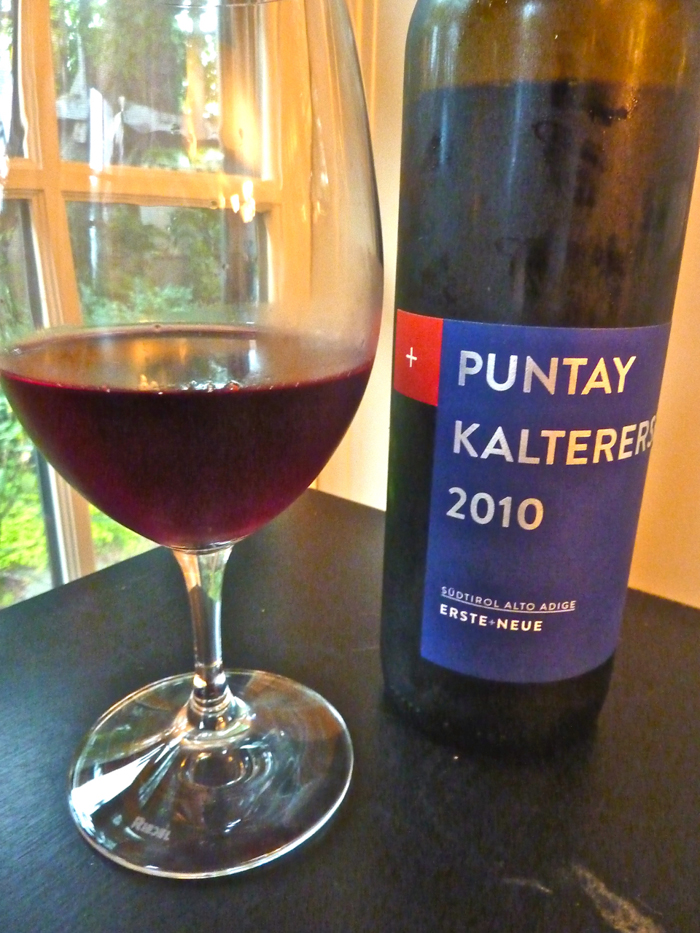Currently, there are eight different DOC zones within the Alto Adige region. While today this region is part of Italy, for most of its history it was ruled by non-Italians, most recently being part of the Austro-Hungarian empire until the end of World War I. It is still common today to find German spoken there, and you will see both German and Italian used on the labels of wines from this region - as well as English, if you are drinking them in the US!

Alto Adige (Sudtiroler): You will see Alto Adige on almost all DOC wines from this region, usually followed by the varietal (e.g. Alto Adige Chardonnay). The only exceptions are sparkling wines and Alto Adige Bianco white wines. This region is the largest DOC, with almost 4,000 hectares under production and accounting for just under 75% of the total for Alto Adige.
Lago di Caldaro (Kalterersee): Next in size, but significantly smaller at under 500 hectares of vineyards and 9% of the total production is the Lago di Caldaro DOC. This is the one region where you will not see Alto Adige preceding the DOC name, as this DOC is shared with neighboring Trentino. However, you may see either Alto Adige or Sudtirol somewhere on the label, along with classico or klassisch. The best wines from this region will also be labeled as superiore or auslese, indicating they have undergone additional aging.

Alto Adige Valle Isarco (Sudtirol Eisacktaler): Italian style white wines are the primarily product found in this DOC, located in Valle Isarco. There are a few German style exceptions, the Klausner Laitacher wines. Once again, the DOC name is followed by either a varietal name or location of origin. White varietals covered by this particular DOC include Pinot Grigio, Sylvaner, Veltliner, Muller Thurgau, Kerner, Gewurztraminer and Riesling. The red are Schiava, Portugieser, Lagrein, and Pinot Noir. Approximately 6% of the total production for the province comes from this region, with about 300 hectares of vineyards under cultivation.

Alto Adige Santa Maddalena (Sudtirol St. Magdalener): This DOC is located north of Bolzano, where red wines from made from the Schiava grape are made. It is allowable to produce blended wines here as well, containing up to 15% Pinot Noir or Lagrein. There is a classico or kalssisch designation to a smaller region within this DOC, an indication of higher quality. This classico region includes St. Magdalena, St. Justina, St. Peter, Rentsch and Leitach. Just over 200 hectares under vines, this DOC produces 4.5% of the total production for Alto Adige.
Alto Adige Terlano (Sudtirol Terlaner): This DOC applies exclusively to the Italian style whites produced in this region, blends that contain a minimum of 50% Chardonnay or Pinot Bianco. The remaining grapes are often not identified. 130 hectares, providing 2.5% of the total production.
Alto Adige Meranese (Sudtirol Meraner): Consisting of approximately 130 hectares of vineyards located around Merano, this zone is responsible for 2.5% of the wines produced in the Alto Adige DOC. This zone produces only reds made from the Schiava grape.
Alto Adige Valle Venosta (Sudtirol Vinshegau): The most recent DOC member from Alto Adige, again with the DOC name followed with the grape varietal. Allowable varietals in this DOC include whites Pinot Bianco, Chardonnay, Pinto Grigio, Muller Thurgau, Kerner, Riesling and Gewurztraminer, and reds Pinot Noir and Schiava.
Alto Adige Colli di Bolzano (Sudtirol Bozner Leiten): This region is also located on the slopes north of Bolzano, where is surrounds the Santa Maddalena DOC. As in that DOC, Schiava is the grape of choice for the reds produced here.


